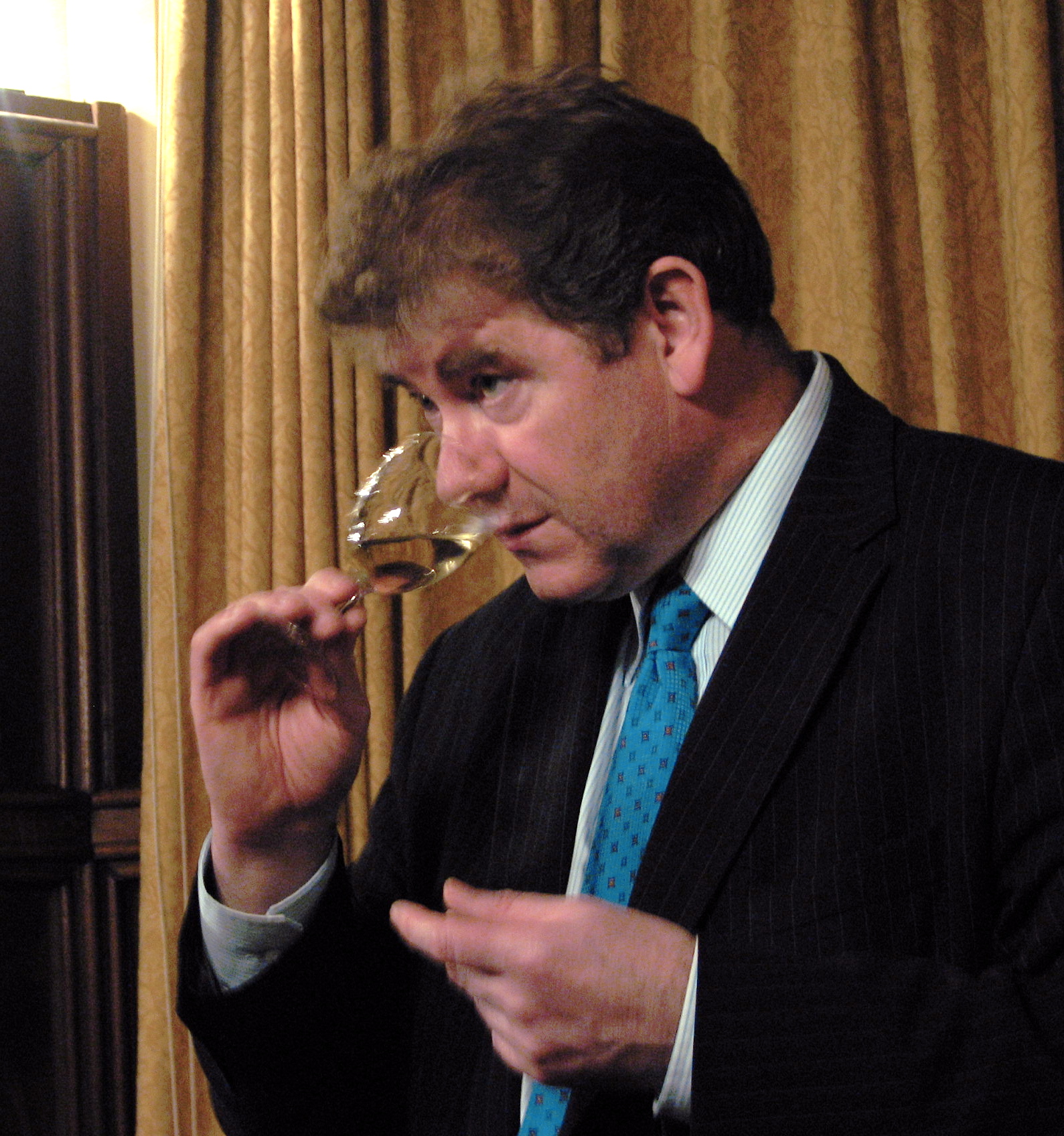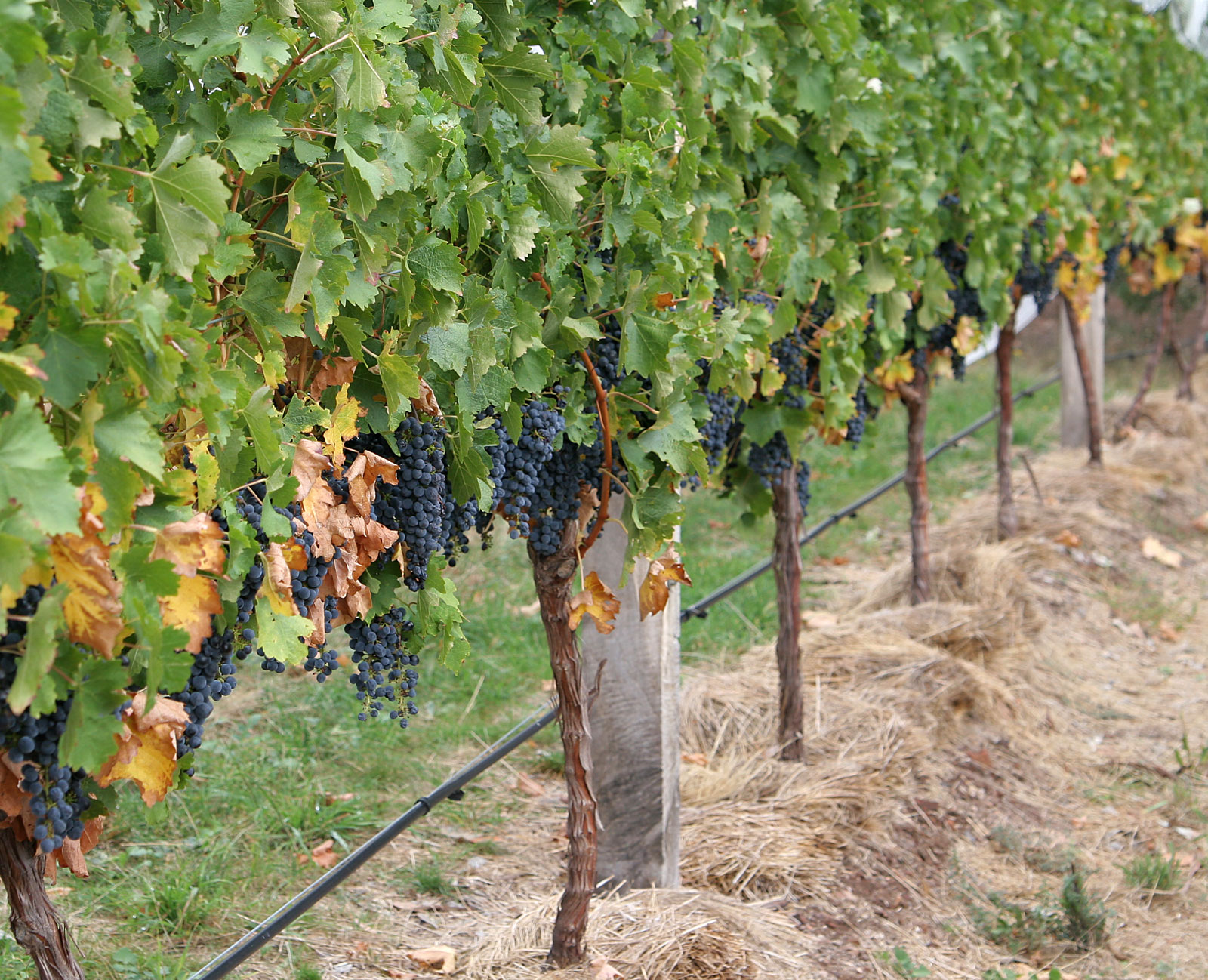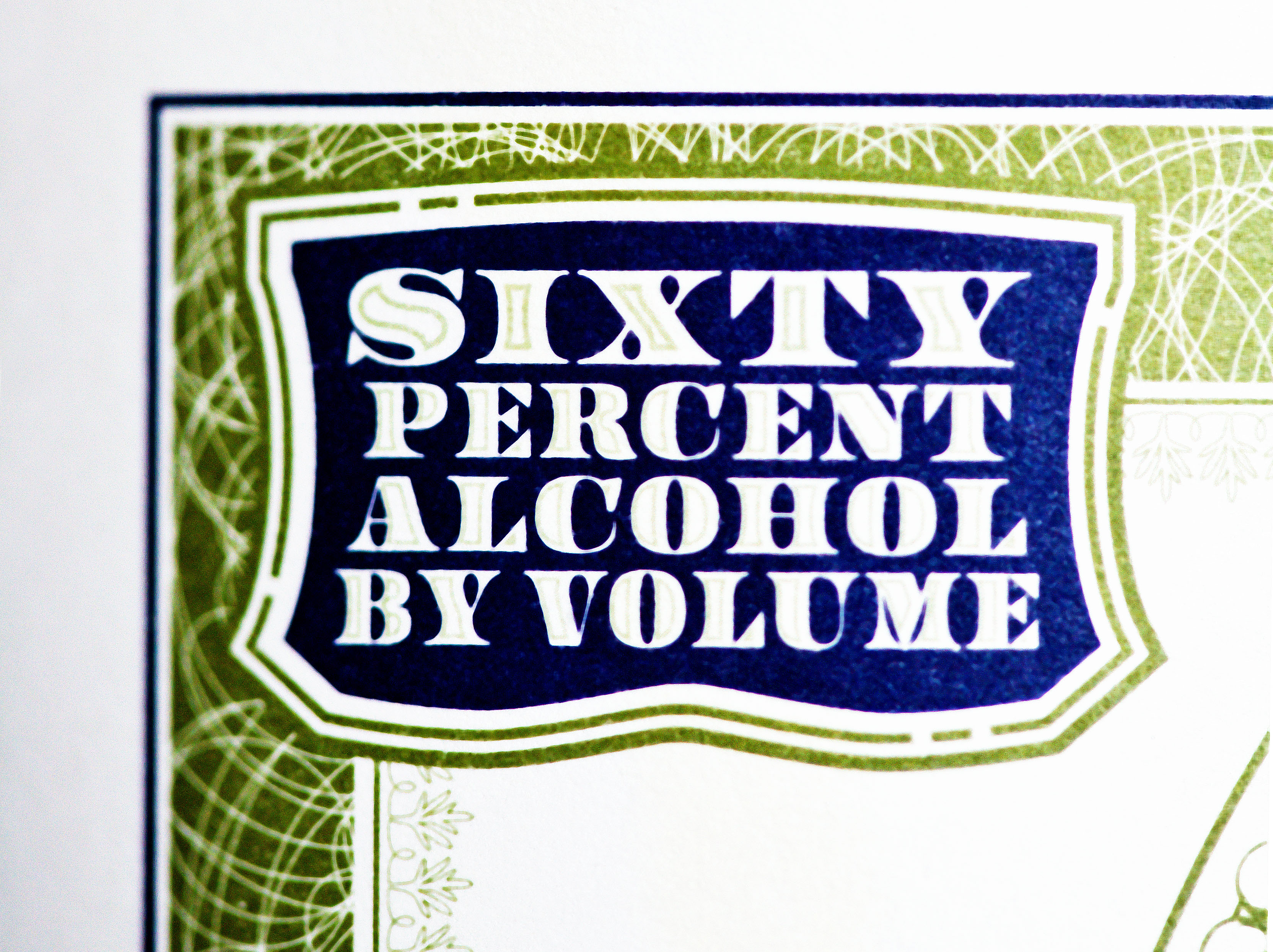|
Termarina Rossa
Termarina rossa is a red Italian wine grape variety that is grown in the Emilia-Romagna region of northern Italy. The grape is unique among ''Vitis vinifera'' varieties in that it is naturally seedless. Historically Termarina rossa was grown in the provinces of Parma and Reggio Emilia for use in production of jams and ''saba'', a sweet syrup, made from boiling the must but today it is used as a blending variety in some of ''Indicazione geografica tipica'' (IGT) wines of the area.J. Robinson, J. Harding and J. Vouillamoz ''Wine Grapes - A complete guide to 1,368 vine varieties, including their origins and flavours'' pg 1047 Allen Lane 2012 History and relationship to other grapes The grape was first mentioned under the synonym ''Uva Passerina'' in Vincenzo Bertozzi's 1840 treatise on viticulture titled ''Viti della Provincia di Reggio Emilia''. While Bertozzi also mentioned a white berried version of Termarina (and there is a white Passerina grape grown in the Marche region), DN ... [...More Info...] [...Related Items...] OR: [Wikipedia] [Google] [Baidu] |
Italian Wine
Italian wine is produced in every region of Italy. Italy is the world's largest producer of wine, with an area of under vineyard cultivation, and contributing a 2013–2017 annual average of 48.3 million hl of wine. In 2018 Italy accounted for 19 per cent of global production, ahead of France (17 per cent) and Spain (15 per cent). Italian wine is both exported around the world and popular domestically among Italians, who consume an average of 42 litres per capita, ranking fifth in world wine consumption. The origins of vine-growing and winemaking in Italy has been illuminated by recent research, stretching back even before the Phoenician, Etruscans and Greek settlers, who produced wine in Italy before the Romans planted their own vineyards. The Romans greatly increased Italy's viticultural area using efficient viticultural and winemaking methods. History Vines have been cultivated from the wild ''Vitis vinifera'' grape for millennia in Italy. It was previously believed tha ... [...More Info...] [...Related Items...] OR: [Wikipedia] [Google] [Baidu] |
Greek Wine
Greece is one of the oldest wine- producing regions in the world and among the first wine-producing territories in Europe. The earliest evidence of Greek wine has been dated to 6,500 years agoMashed grapes find re-write history of wine Zeenews where wine was produced on a household or communal basis. In ancient times, as trade in wine became extensive, it was transported from end to end of the Mediterranean; Greek wine had especially high prestige in Italy under the Roman Empire. In the medieval period, wines exported from , and other Greek ports fetche ... [...More Info...] [...Related Items...] OR: [Wikipedia] [Google] [Baidu] |
Aroma (wine)
The aromas of wine are more diverse than its flavours. The human tongue is limited to the primary tastes perceived by taste receptors on the tongue – sourness, bitterness, saltiness, sweetness and savouriness. The wide array of fruit, earthy, leathery, floral, herbal, mineral, and woodsy flavour present in wine are derived from aroma notes sensed by the olfactory bulb.J. Robinson (ed) ''"The Oxford Companion to Wine"'' Third Edition p. 683 Oxford University Press 2006 In wine tasting, wine is sometimes smelled before taking a sip in order to identify some components of the wine that may be present. Different terms are used to describe what is being smelled. The most basic term is aroma which generally refers to a "pleasant" smell as opposed to odour which refers to an unpleasant smell or possible wine fault. The term aroma may be further distinguished from bouquet which generally refers to the smells that arise from the chemical reactions of fermentation and aging of ... [...More Info...] [...Related Items...] OR: [Wikipedia] [Google] [Baidu] |
Jancis Robinson
Jancis Mary Robinson OBE, ComMA, MW (born 22 April 1950) is a British wine critic, journalist and wine writer. She currently writes a weekly column for the ''Financial Times'', and writes for her website JancisRobinson.com, updated daily. She provided advice for the wine cellar of Queen Elizabeth II. Early life and education Robinson was born in Carlisle, Cumbria, studied mathematics and philosophy at St Anne's College, University of Oxford, and worked for a travel company after leaving university; according to her website, she worked in marketing for Thomson Holidays. Career Robinson started her wine writing career on 1 December 1975 when she became assistant editor for the trade magazine '' Wine & Spirit''. In 1984, she became the first person outside the wine trade to become a Master of Wine. From 1995 until she resigned in 2010 she served as British Airways' wine consultant, and supervised the BA Concorde cellar luxury selection. As a wine writer, she has become one o ... [...More Info...] [...Related Items...] OR: [Wikipedia] [Google] [Baidu] |
Master Of Wine
Master of Wine (MW) is a qualification (not an academic degree) issued by The Institute of Masters of Wine in the United Kingdom. The MW qualification is generally regarded in the wine industry as one of the highest standards of professional knowledge. The Institute was founded in 1955, and the MW examinations were first arranged in 1953 by the Worshipful Company of Vintners and the Wine and Spirits Association. Qualification Before enrolling in the MW study programme, prospective students must hold an advanced wine qualification, at least Diploma level from the Wine & Spirit Education Trust, or an appropriately high level sommelier certificate, such as Advanced Sommelier from the Court of Master Sommeliers. Also, prospective students need to have a minimum of three years' professional work experience in the global wine community. Applicants must submit a basic essay, a tasting paper, a brief statement explaining their interest in becoming a Master of Wine, and a reference t ... [...More Info...] [...Related Items...] OR: [Wikipedia] [Google] [Baidu] |
Ampelographer
Ampelography ( ἄμπελος, "vine" + γράφος, "writing") is the field of botany concerned with the identification and classification of grapevines, ''Vitis'' spp. Traditionally this has been done by comparing the shape and colour of the vine leaves and grape berries; more recently the study of vines has been revolutionised by DNA fingerprinting. Early history The grape vine is an extremely variable species and some varieties, such as Pinot, mutate particularly frequently. At the same time, the wine and table grape industries have been important since ancient times, so large sums of money can depend on the correct identification of different varieties and clones of grapevines. The science of ampelography began seriously in the 19th century, when it became important to understand more about the different species of vine, as they had very different resistance to disease and pests such as phylloxera. Many vine identification books were published at this time, one of whic ... [...More Info...] [...Related Items...] OR: [Wikipedia] [Google] [Baidu] |
Grape Jam - Mashing Concord Grapes
A grape is a fruit, botanically a berry, of the deciduous woody vines of the flowering plant genus ''Vitis''. Grapes are a non- climacteric type of fruit, generally occurring in clusters. The cultivation of grapes began perhaps 8,000 years ago, and the fruit has been used as human food over history. Eaten fresh or in dried form (as raisins, currants and sultanas), grapes also hold cultural significance in many parts of the world, particularly for their role in winemaking. Other grape-derived products include various types of jam, juice, vinegar and oil. History The Middle East is generally described as the homeland of grape and the cultivation of this plant began there 6,000–8,000 years ago. Yeast, one of the earliest domesticated microorganisms, occurs naturally on the skins of grapes, leading to the discovery of alcoholic drinks such as wine. The earliest archeological evidence for a dominant position of wine-making in human culture dates from 8,000 years ago in Georg ... [...More Info...] [...Related Items...] OR: [Wikipedia] [Google] [Baidu] |
Pruning
Pruning is a horticultural, arboricultural, and silvicultural practice involving the selective removal of certain parts of a plant, such as branches, buds, or roots. The practice entails the ''targeted'' removal of diseased, damaged, dead, non-productive, structurally unsound, or otherwise unwanted plant material from crop and landscape plants. Some try to remember the categories as "the 4 D's": the last general category being "deranged". In general, the smaller the branch that is cut, the easier it is for a woody plant to compartmentalize the wound and thus limit the potential for pathogen intrusion and decay. It is therefore preferable to make any necessary formative structural pruning cuts to young plants, rather than removing large, poorly placed branches from mature plants. In nature, meteorological conditions such as wind, ice and snow, and salinity can cause plants to self-prune. This natural shedding is called abscission. Specialized pruning practices may be ... [...More Info...] [...Related Items...] OR: [Wikipedia] [Google] [Baidu] |
Canopy Management
In viticulture, the canopy of a grapevine includes the parts of the vine visible aboveground - the trunk, cordon, stems, leaves, flowers, and fruit. The canopy plays a key role in light energy capture via photosynthesis, water use as regulated by transpiration, and microclimate of ripening grapes. Canopy management is an important aspect of viticulture due to its effect on grape yields, quality, vigor, and the prevention of grape diseases. Various viticulture problems, such as uneven grape ripening, sunburn, and frost damage, can be addressed by skillful canopy management.Weiss, S.B., D.C. Luth, and B. Guerra. 2003. Potential solar radiation in a VSP trellis at 38°N latitude. ''Practical Winery and Vineyard'' 25:16-27. In addition to pruning and leaf trim, the canopy is often trained on trellis systems to guide its growth and assist in access for ongoing management and harvest.J. Robinson (ed) ''"The Oxford Companion to Wine"'' Third Edition pp. 134-135 Oxford University Pr ... [...More Info...] [...Related Items...] OR: [Wikipedia] [Google] [Baidu] |
Yield (wine)
In viticulture, the yield is a measure of the amount of grapes or wine that is produced per unit surface of vineyard, and is therefore a type of crop yield. Two different types of yield measures are commonly used, mass of grapes per vineyard surface, or volume of wine per vineyard surface. The yield is often seen as a quality factor, with lower yields associated with wines with more concentrated flavours, and the maximum allowed yield is therefore regulated for many wine appellations. Units and conversions In most of Europe, yield is measured in hectoliters per hectare, i.e., by the volume of wine. In most of the New World, yield is measured in tonnes per hectare (or short tons per acre in the USA) – i.e. by mass of grapes produced per unit area. Due to differing winemaking procedures for different styles of wine, and different properties of different grape varieties, the amount of wine produced from a unit mass of grapes varies. It is therefore not possible to make an exac ... [...More Info...] [...Related Items...] OR: [Wikipedia] [Google] [Baidu] |
Alcohol Level
Alcohol by volume (abbreviated as ABV, abv, or alc/vol) is a standard measure of how much alcohol (ethanol) is contained in a given volume of an alcoholic beverage (expressed as a volume percent). It is defined as the number of millilitres (mL) of pure ethanol present in of solution at . The number of millilitres of pure ethanol is the mass of the ethanol divided by its density at , which is . The ABV standard is used worldwide. The International Organization of Legal Metrology has tables of density of water–ethanol mixtures at different concentrations and temperatures. In some countries, e.g. France, alcohol by volume is often referred to as degrees Gay-Lussac (after the French chemist Joseph Louis Gay-Lussac), although there is a slight difference since the Gay-Lussac convention uses the International Standard Atmosphere value for temperature, . Volume change Mixing two solutions of alcohol of different strengths usually causes a change in volume. Mixing pure water with ... [...More Info...] [...Related Items...] OR: [Wikipedia] [Google] [Baidu] |
Body (wine)
The use of wine tasting descriptors allows the taster to qualitatively relate the aromas and flavors that the taster experiences and can be used in assessing the overall quality of wine. Wine writers differentiate wine tasters from casual enthusiasts; tasters attempt to give an objective description of the wine's taste (often taking a systematic approach to tasting), casual enthusiasts appreciate wine but pause their examination sooner than tasters. The primary source of a person's ability to taste wine is derived from their olfactory senses. A taster's own personal experiences play a significant role in conceptualizing what they are tasting and attaching a description to that perception. The individual nature of tasting means that descriptors may be perceived differently among various tasters. The following is an incomplete list of wine tasting descriptors and a common meaning of the terms. These terms and usage are from Karen MacNeil's 2001 edition of ''The Wine Bible'' u ... [...More Info...] [...Related Items...] OR: [Wikipedia] [Google] [Baidu] |




_Ribbon.png)



